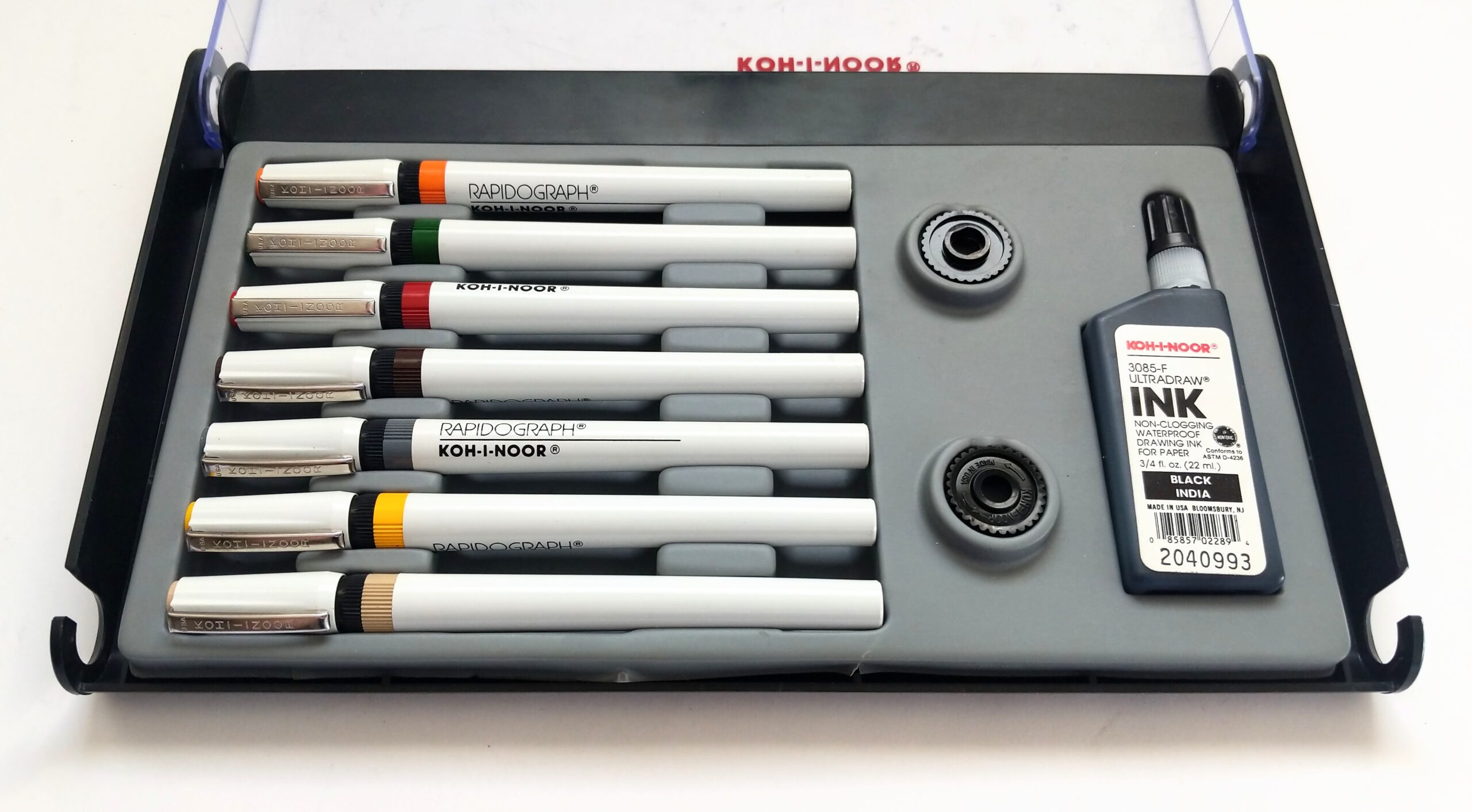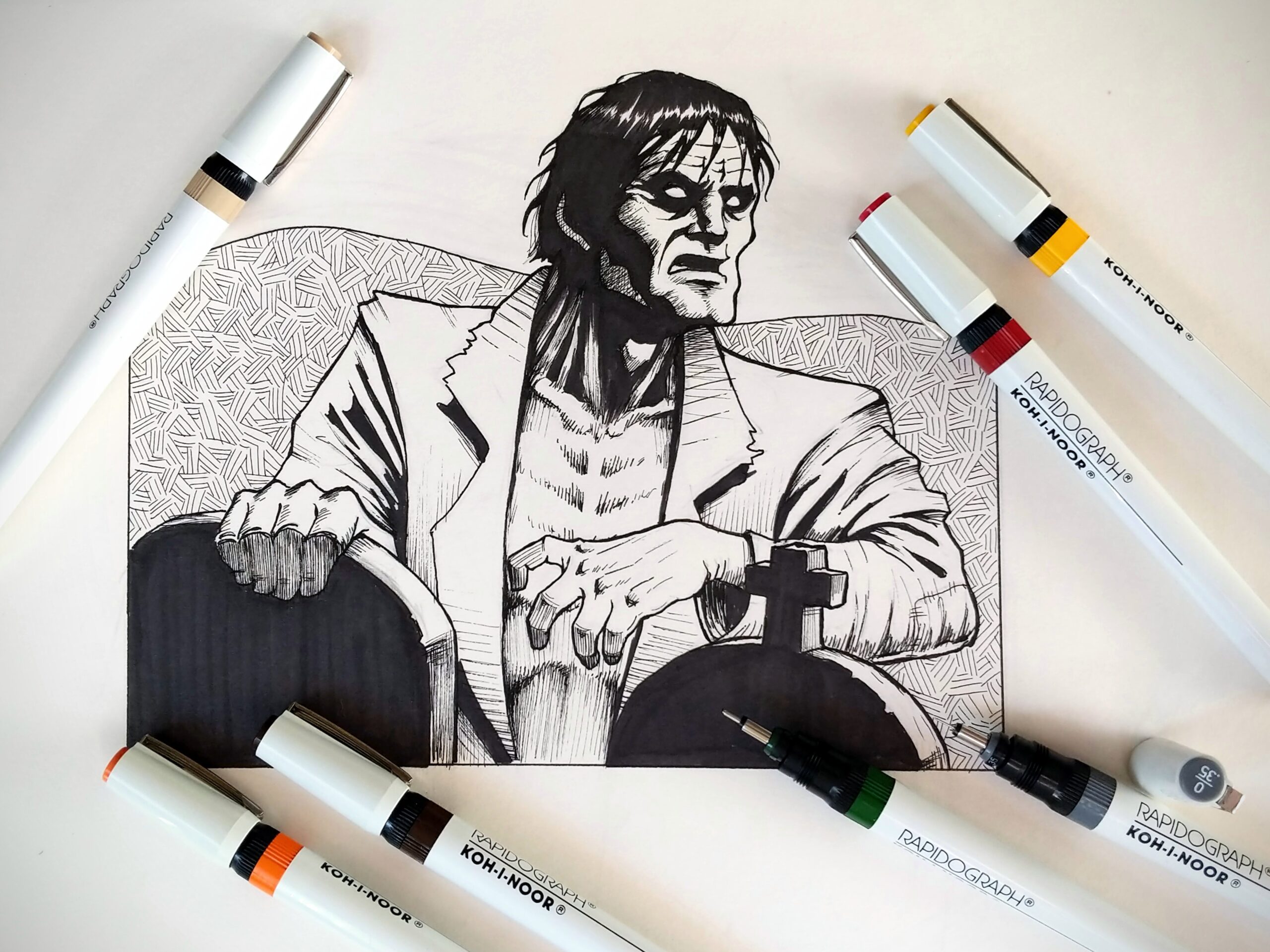The first time you use a technical pen is a somewhat awe-inspiring experience. With no felt tip or rollerball to get in the way, you’re a step closer to the raw, unbridled power of liquid ink.
It seems to just beam-out from the pen, like a black laser beam cutting an impossibly consistent line across the paper.
In this hands on review, we’ll cover one of the most popular technical pens on the market, the Rapidograph, which has been a studio staple since 1953.
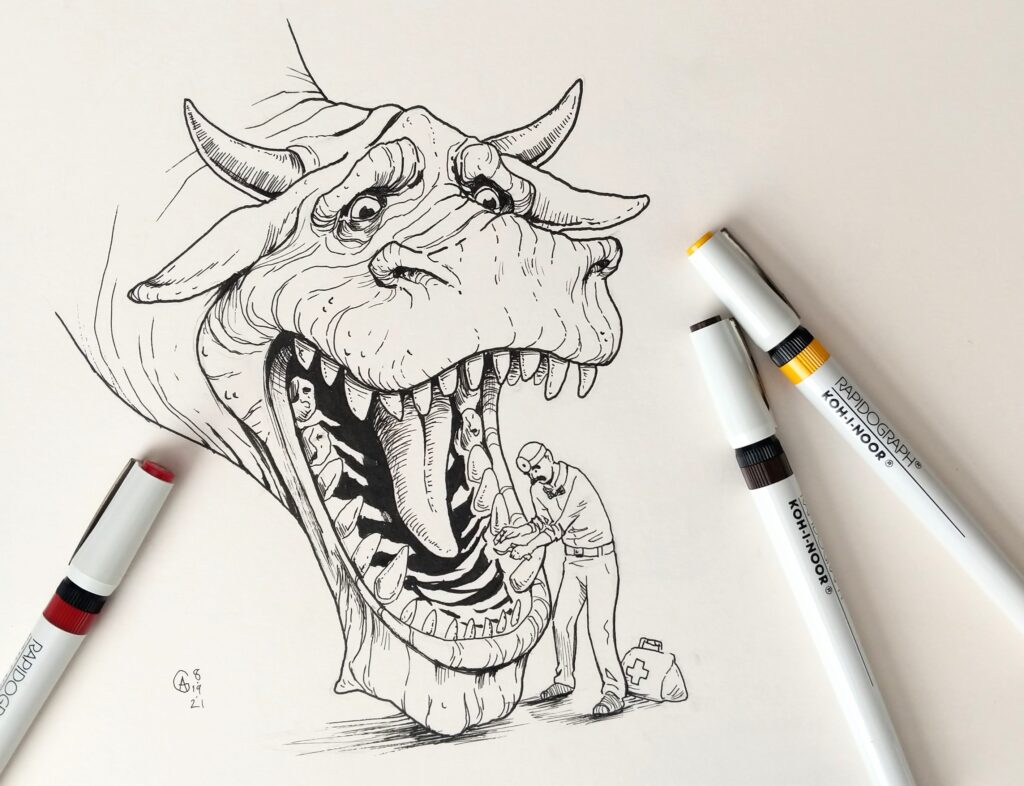
What is a technical pen?
In the wide world of pen species, technical pens played a key role for many working professionals throughout the 20th century. Architects, engineers and draftsmen relied on technical pens like the Rapidograph for a precise and consistent line width.
While those positions may have transitioned towards software tools, technical pens remain a popular choice among artists.
The defining characteristic of a technical pen is the lack of a tip at the end of the nib. Instead, the ink is drawn through a special capillary system directly from the chamber, rather than absorbed through a felt tip like you’d find in something like a Micron pen.
When put to paper, the ink flows from the pen at a perfectly consistent width. Pressing down harder makes no difference – the only thing controlling the ink flow is the diameter of the nib, not the pressure.
Drawing with a Rapidograph pen
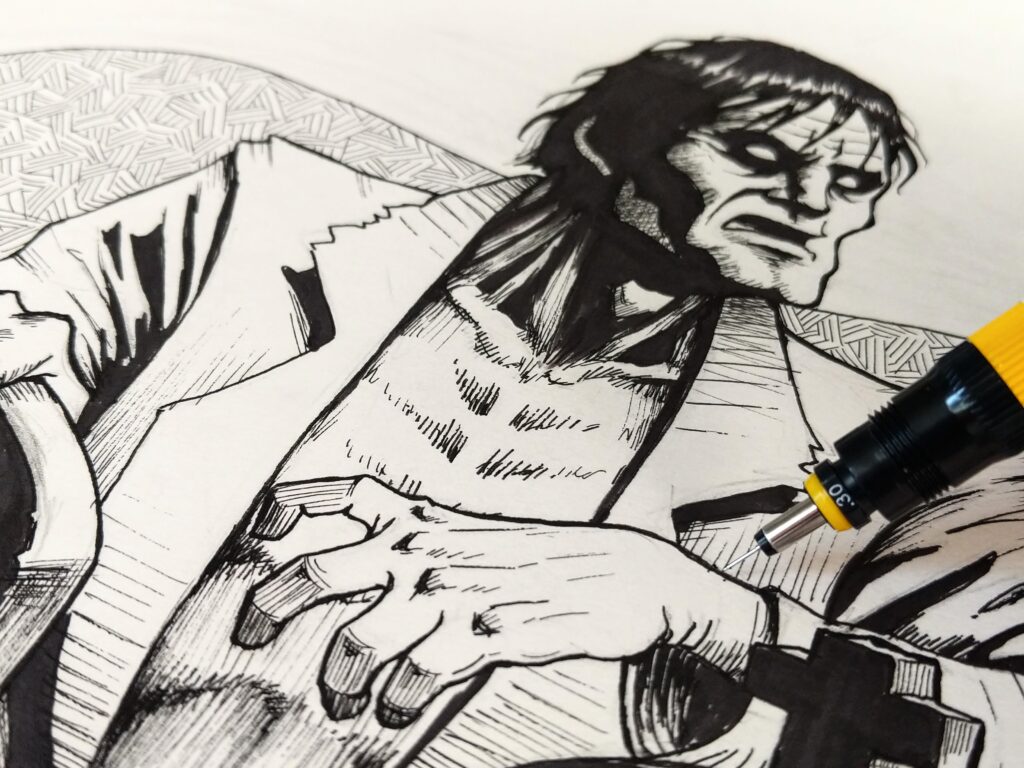
The first thing you’ll notice is the very unique feel the pen has on paper. Because there’s no traditional tip, you’re dragging the metal edge of the nib itself across the page. This can feel somewhat scratchy at first, but when you realize how little pressure you need to apply, it’s easy to get used to.
For best results, holding the pen in a more vertical position than you normally write with makes the strokes feel smoother.
The precise nature of a technical pen means it doesn’t do particularly well with swooping organic shapes or calligraphy. In a way it’s on the opposite end of the spectrum from something like a brush pen, which has a naturally varied and adaptable stroke.
Lifting the pen away from the paper for a fading effect doesn’t really work either. The ink flow is quite binary – either a full line or nothing.
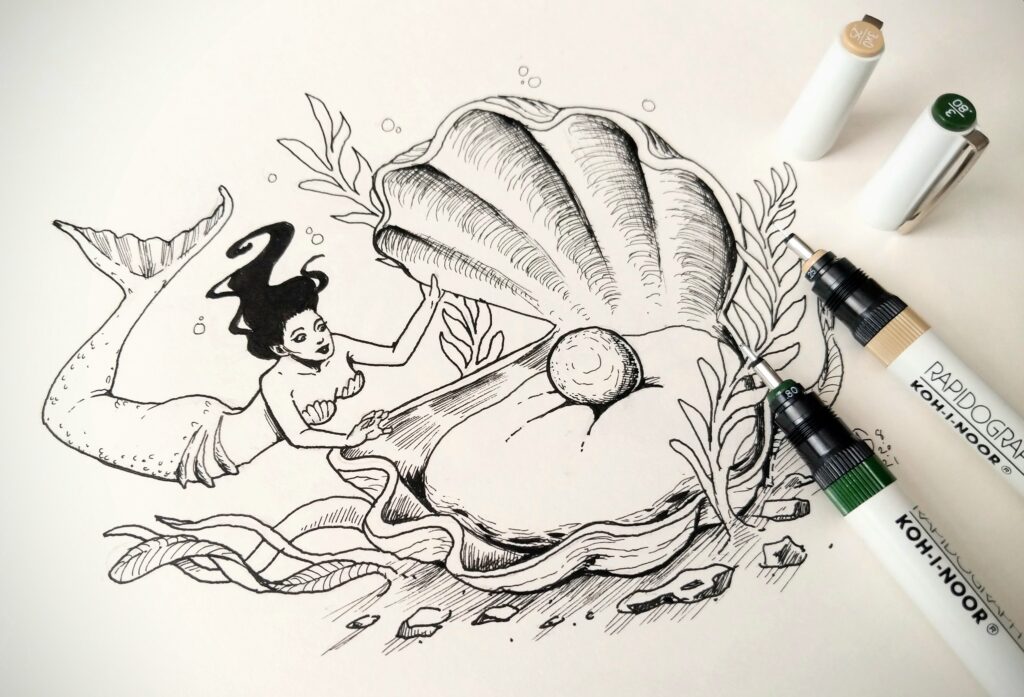
That said, there’s nothing quite as surgically precise as a Rapidograph. The lightest contact with the paper results in crisp, smooth lines that somehow make fine details feel far less tedious.
Hatching, stippling and other texture techniques look cleaner and more uniform.
Rapidograph nib sizes
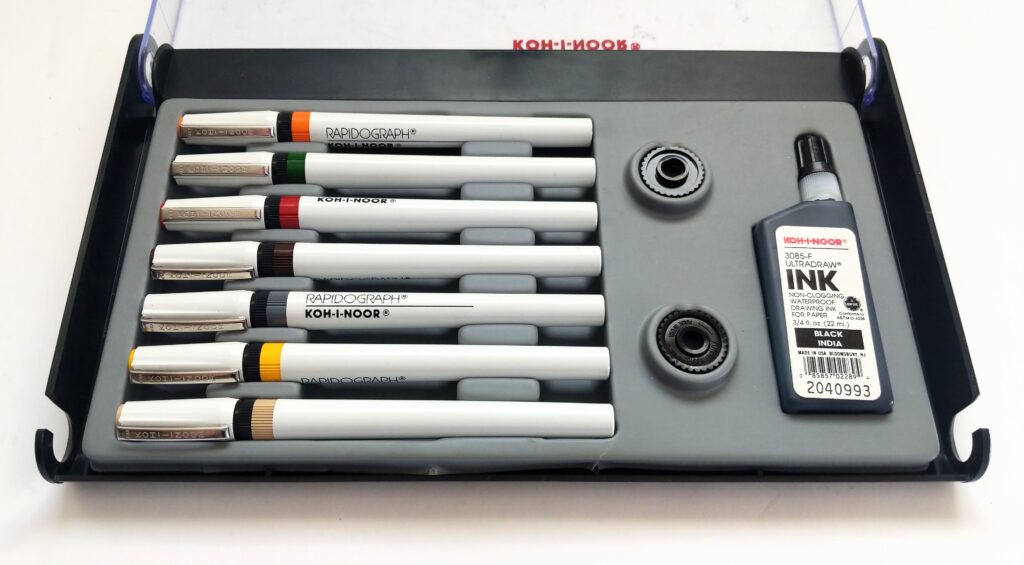
The full seven pen set reviewed here ranges from the boldest 1.20mm size down to the outright microscopic 0.25mm. The level of detail possible with the .25 is amazing and it’s best described as drawing with a needle.
It’s so fine in fact, that it’s possible to slice right through the paper if you’re not gentle. 😯
To help make it easier to spot the different nib sizes, Koh-I-Noor has added color-coded caps and body rings to each pen. Within no time at all, you’ll be able to tell if something in your art requires a yellow pen, or a big fat orange one.
What’s the black ring for? It’s a special key that helps remove the nib when it’s time to clean the pen.
A word on ink
The cool part about a refillable pen like the Koh-I-Noor Rapidograph is that you have complete control about what ink you use. While their own Ultradraw ink is excellent, you can easily bring your own ink of choice (or color!).
Koh-I-Noor vs Rotring
You may have noticed both Rotring and Koh-I-Noor produce technical pens under the Rapidograph name. The difference? Rotring uses a replaceable ink cartridge, while Koh-I-Noor’s is refillable.
How to refill a Koh-I-Noor Rapidograph pen
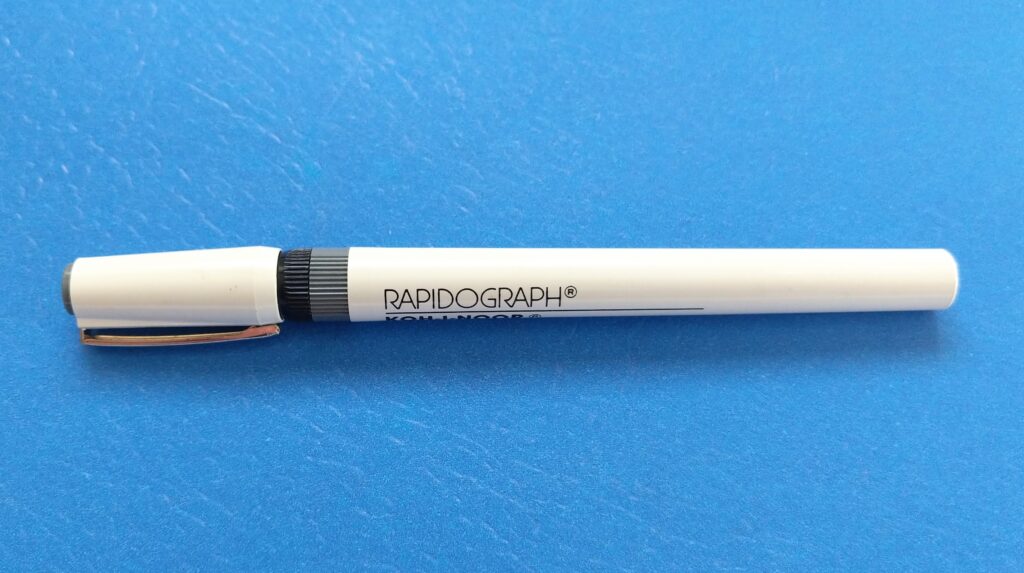
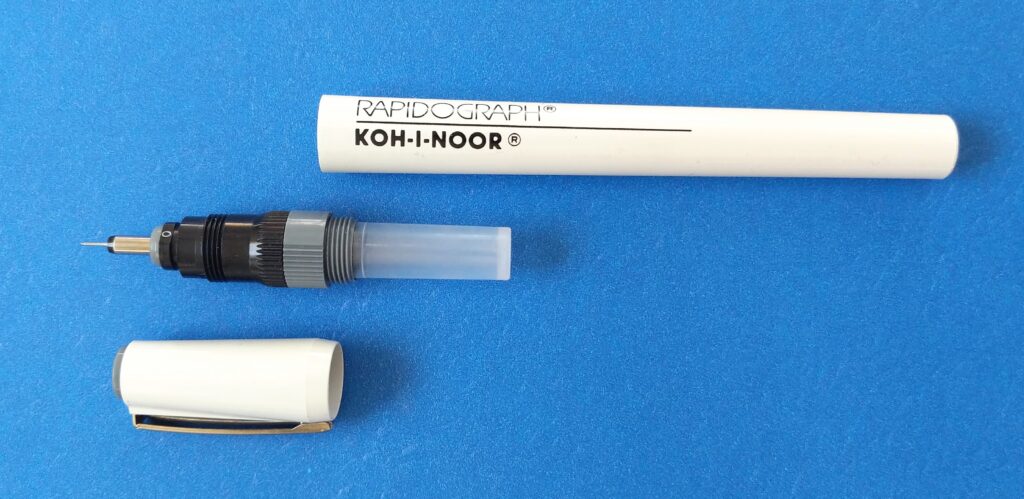
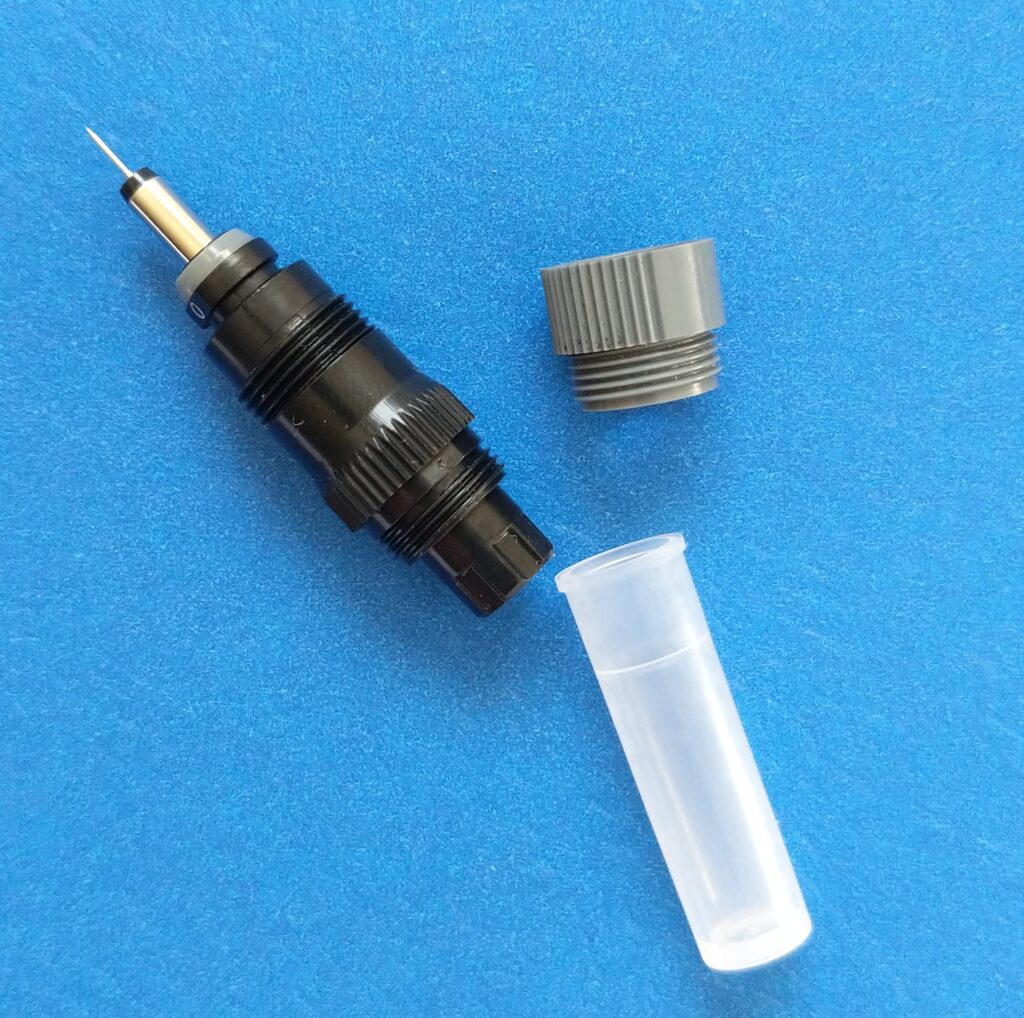
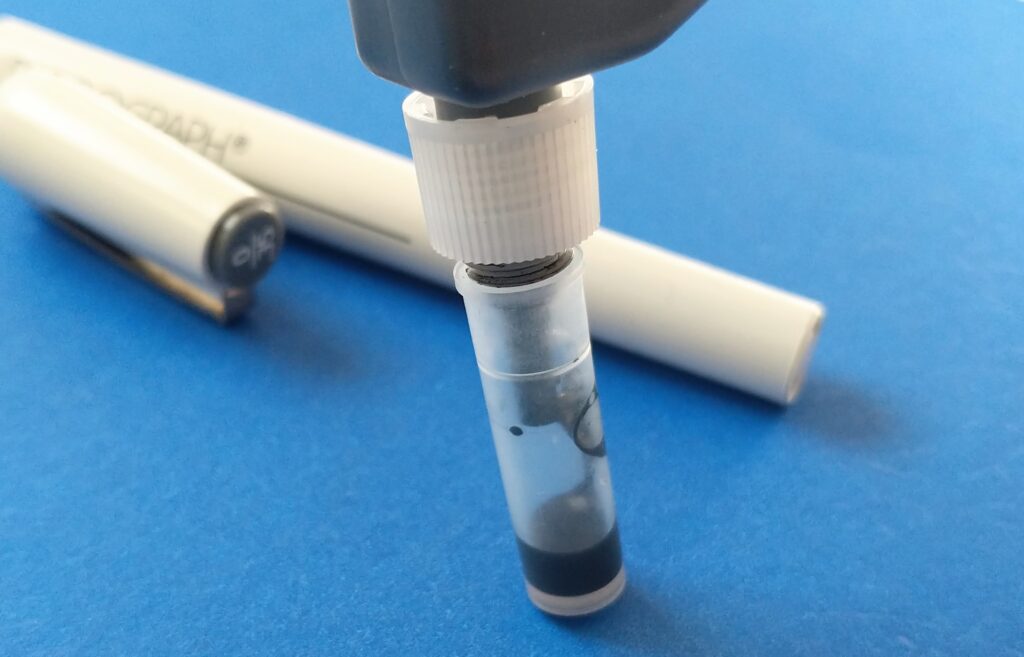
- Unscrew the cap
- Unscrew the plastic white barrel from the colored clamp ring
- Unscrew the colored clamp ring, revealing the ink cartridge
- Carefully pull the cartridge off and refill it to the fill-line 1/4″ from the top
- Reverse the process to reassemble the pen
It can take a few minutes for the ink to be pulled through to the tip. It’s recommended to gently shake the pen horizontally and then spend a few minutes scribbling/tapping until you get a solid ink flow.
Final thoughts
Because of their constant line width, you find yourself switching between pen sizes more often. This makes owning a set of at least three pens feel pretty much required, but at around $20 each, they don’t come cheap.
While the pens in this review are new and a joy to use, they can become clogged over time. There are plenty of methods out there to clean the nibs, though it is an extra step that might turn some people away.
However, the Rapidograph’s crisp and reliable line is simply incredible and an excellent choice for artists looking to move away from disposable pens.
